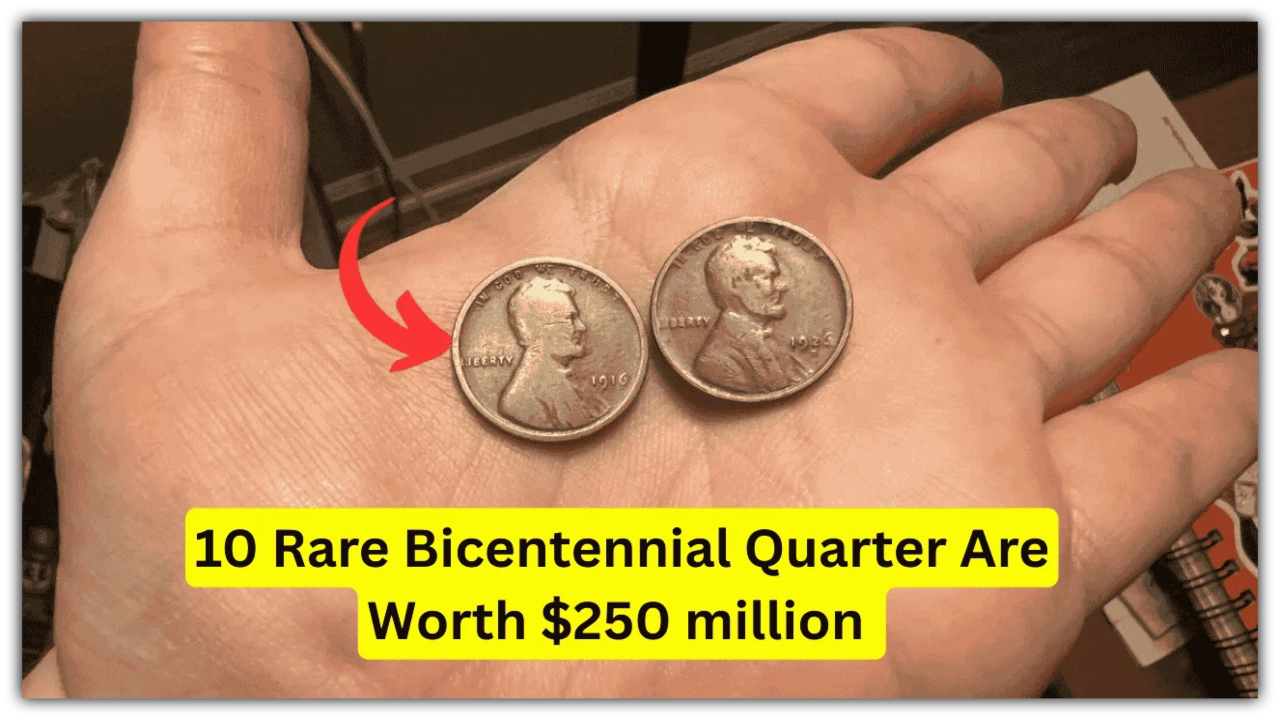You Might Be Sitting on a $270 Million Quarter Without Even Knowing It—Check Your Change Now!
Imagine this: you’re cleaning out an old drawer or flipping through a jar of loose change, and you find a 1976 quarter—the kind with the drummer on the back. Now imagine that same coin being worth millions. Sounds unbelievable, right?
Lately, there’s been a lot of chatter online about Bicentennial quarters being worth up to $270 million. But before you start planning an early retirement, let’s talk about what’s real, what’s rumor, and how to tell if your coin is actually worth anything.
What’s So Special About Bicentennial Quarters?
Back in 1976, to celebrate 200 years of American independence, the U.S. Mint issued special quarters with a colonial drummer on the reverse. They were produced in huge numbers—hundreds of millions, in fact—so most of them are still only worth 25 cents.
But a few rare versions are in a completely different league. These are the coins with unusual errors, made from silver, or in flawless, proof condition. That’s where the value starts to climb—and for some, even skyrocket.
So Where Did the $270 Million Story Come From?
That eye-popping number has been making the rounds in articles and social media posts, claiming that one or more Bicentennial quarters are worth up to $270 million. But let’s be real: there’s no public auction or verified sale confirming that figure.
It’s likely a mix of speculation and private sale rumors. One version claimed a rare Bicentennial quarter fetched $150 million in a private transaction—but again, there’s no public record to back that up. A few sources have even mentioned $118 million, but those numbers should be taken with a big grain of salt.

What Actually Makes One of These Quarters Valuable?
Not all Bicentennial quarters are created equal. Here are the key features that can turn a common quarter into a collector’s dream:
-
Mint mark: Look under the image of George Washington. If there’s an “S,” it means the coin was made in San Francisco, which could indicate it’s part of a special silver proof set.
-
Silver content: Some quarters were made with 40% silver, mostly for collectors. These are worth more than regular copper-nickel versions.
-
Error coins: Coins with minting mistakes—like double die errors or off-center strikes—are highly valuable.
-
Proof condition: Coins in perfect or near-perfect condition (graded PR-69 or PR-70) can sell for thousands.
-
Rarity: Some combinations—like a silver proof coin with a double die error—are extremely rare, which drives up value.
Realistic Values in Today’s Market
Here’s a more grounded look at what some of these coins are actually selling for:
-
Standard 1976 quarters: Still worth 25 cents.
-
1976-S silver proof coins in perfect condition: Around $10,000–$15,000.
-
Rare error coins: These can range anywhere from $1,000 to over $250,000, depending on the specifics.
-
The ultra-rare ones: While there’s no confirmed $270 million sale, it’s not impossible for unique pieces to be worth several million, especially in private deals.
Think You Might Have One?
If you’ve got a Bicentennial quarter and you’re curious about its value, here’s what to do:
-
Don’t clean it. Cleaning can ruin a coin’s value, even if it looks nicer.
-
Check for mint marks and errors. A magnifying glass helps.
-
Weigh it. Silver quarters are slightly heavier than the copper-nickel ones.
-
Consider getting it graded. Services like PCGS or NGC can tell you exactly what it’s worth.
-
Talk to a reputable dealer or auction house. Avoid selling to someone who promises big money without explaining why.
Most Bicentennial quarters aren’t going to change your life. But every once in a while, someone stumbles on a rare gem worth thousands—or more. It’s rare, but not impossible. And the best part? It costs nothing to check.
If you’ve got one of these quarters lying around, it’s worth taking a closer look. You never know—you just might be holding something a lot more valuable than pocket change.


Comments are closed, but trackbacks and pingbacks are open.